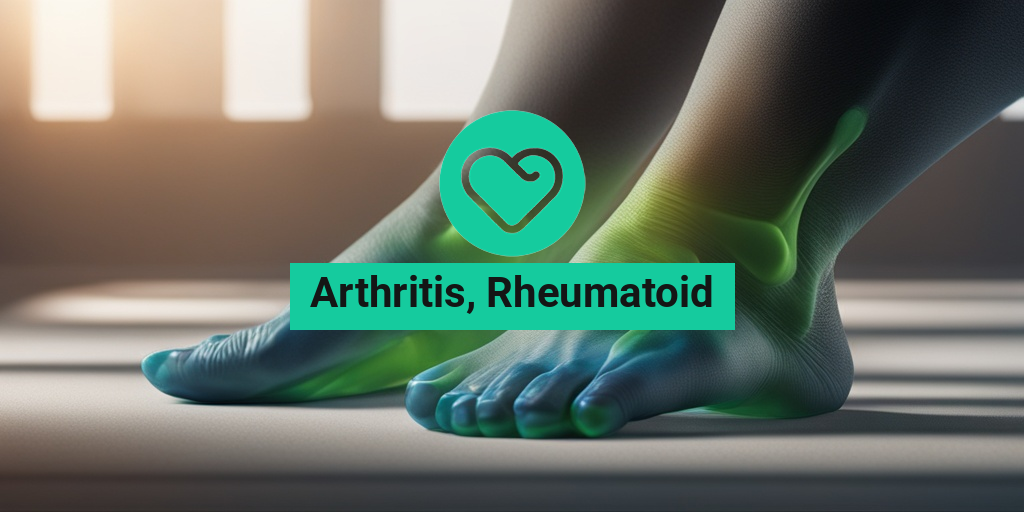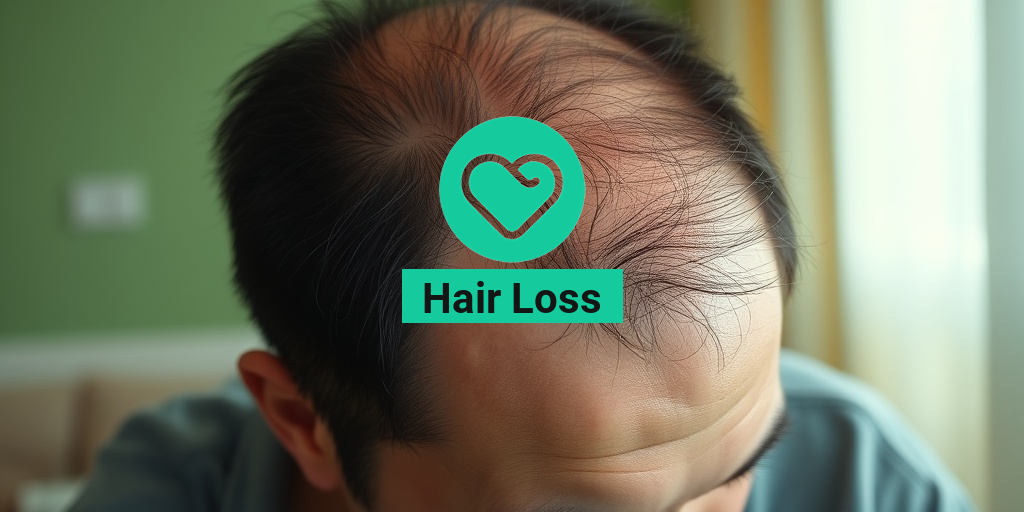What Is Rheumatoid Arthritis?
Rheumatoid arthritis (RA) is a chronic autoimmune disease that affects millions of people worldwide. It’s a condition in which the immune system mistakenly attacks the lining of the joints, leading to inflammation, pain, and stiffness. In rheumatoid arthritis, the immune system targets the synovium, a thin membrane that surrounds the joints, causing it to become inflamed and thickened.
This inflammation can eventually damage the cartilage and bone within the joint, leading to permanent damage and disability if left untreated. Rheumatoid arthritis can affect any joint, but it most commonly affects the hands, wrists, knees, feet, and ankles.
Rheumatoid arthritis is often confused with osteoarthritis, another type of arthritis that occurs when the cartilage in the joints wears down over time. However, rheumatoid arthritis is an autoimmune disease, whereas osteoarthritis is a degenerative condition.
Rheumatoid Arthritis Symptoms
The symptoms of rheumatoid arthritis can vary from person to person, but they often include:
Joint Pain and Stiffness
Joint pain and stiffness are the most common symptoms of rheumatoid arthritis. The pain can be mild, moderate, or severe, and it can affect one or multiple joints. The stiffness can make it difficult to move the affected joints, especially in the morning or after a period of inactivity.
Swollen and Red Joints
Inflammation in the joints can cause them to become swollen, red, and warm to the touch. This can be accompanied by pain and stiffness, making it difficult to perform daily activities.
Fatigue
Fatigue is a common symptom of rheumatoid arthritis, and it can be debilitating. People with RA may feel tired, weak, and lacking in energy, even after resting or sleeping.
Loss of Appetite
Some people with rheumatoid arthritis may experience a loss of appetite, which can lead to weight loss and malnutrition.
Fevers
Rheumatoid arthritis can cause fevers, which can be accompanied by chills, sweating, and general feelings of illness.
Numbness or Tingling
In some cases, rheumatoid arthritis can cause numbness or tingling sensations in the hands and feet, which can be a sign of nerve damage.
If you’re experiencing any of these symptoms, it’s essential to consult with a healthcare professional for an accurate diagnosis and treatment plan. Early diagnosis and treatment can help manage the symptoms of rheumatoid arthritis and prevent long-term damage. 💊
For more information on rheumatoid arthritis and its treatment options, consider consulting with a healthcare professional or visiting a trusted online resource like Yesil Health AI, which provides evidence-based health answers and personalized guidance. 🌟

Rheumatoid Arthritis Causes and Risk Factors
Rheumatoid arthritis (RA) is a chronic autoimmune disease that affects millions of people worldwide. While the exact causes of rheumatoid arthritis are still not fully understood, researchers have identified several risk factors that can increase a person’s likelihood of developing the condition.
Genetic Factors
Genetics play a significant role in the development of rheumatoid arthritis. If you have a family history of RA, you are more likely to develop the condition. Certain genetic markers, such as HLA-B27, can also increase your risk.
Environmental Triggers
Environmental factors, such as smoking and exposure to pollutants, can trigger the onset of rheumatoid arthritis in people who are genetically predisposed. Smoking, in particular, has been shown to increase the risk of developing RA, especially in women.
Hormonal Factors
Hormonal changes, such as those that occur during pregnancy or menopause, can also contribute to the development of rheumatoid arthritis. Women are more likely to develop RA than men, and the condition often goes into remission during pregnancy.
Infections and Microbiome
Some research suggests that certain infections, such as those caused by bacteria or viruses, may trigger the onset of rheumatoid arthritis in some people. Additionally, an imbalance of the gut microbiome, also known as dysbiosis, has been linked to an increased risk of developing RA.
Other Risk Factors
Other risk factors for rheumatoid arthritis include:
- Age: RA can occur at any age, but it most commonly affects people between the ages of 30 and 60.
- Obesity: Being overweight or obese can increase your risk of developing RA.
- Diet: A diet high in processed foods, sugar, and unhealthy fats may contribute to the development of RA.
- Stress: Chronic stress can exacerbate RA symptoms and increase the risk of developing the condition.
While these risk factors can increase a person’s likelihood of developing rheumatoid arthritis, it’s essential to remember that RA can affect anyone, regardless of their age, gender, or lifestyle.
Rheumatoid Arthritis Diagnosis
Diagnosing rheumatoid arthritis can be a complex process, as the symptoms can be similar to those of other conditions. A diagnosis of RA is typically made through a combination of:
Medical History and Physical Exam
Your doctor will ask you about your symptoms, medical history, and family history of RA. They will also perform a physical exam to look for signs of joint inflammation, such as swelling, redness, and warmth.
Lab Tests
Several lab tests can help diagnose RA, including:
- Rheumatoid factor (RF) test: This test measures the level of RF antibodies in your blood, which are often present in people with RA.
- Anti-citrullinated protein antibody (anti-CCP) test: This test measures the level of anti-CCP antibodies in your blood, which are often present in people with RA.
- Complete blood count (CBC): This test can help identify inflammation and rule out other conditions.
- Erythrocyte sedimentation rate (ESR) and C-reactive protein (CRP) tests: These tests measure the level of inflammation in your body.
Imaging Tests
Imaging tests, such as X-rays, ultrasound, and magnetic resonance imaging (MRI), can help identify joint damage and inflammation.
A diagnosis of rheumatoid arthritis is typically made based on a combination of these factors, as well as the presence of symptoms such as joint pain, stiffness, and swelling. Early diagnosis and treatment are crucial in managing RA and preventing long-term joint damage. 💊

Rheumatoid Arthritis Treatment Options
Rheumatoid arthritis (RA) is a chronic autoimmune disease that affects millions of people worldwide. While there is no cure for RA, there are various treatment options available to manage its symptoms, slow down its progression, and improve the quality of life for those affected. In this article, we’ll delve into the different rheumatoid arthritis treatment options, including medications, lifestyle changes, and alternative therapies.
Medications for Rheumatoid Arthritis
Medications play a crucial role in managing RA symptoms and preventing joint damage. The type of medication prescribed depends on the severity of the disease, the individual’s overall health, and the presence of other health conditions. Let’s take a closer look at the different types of medications used to treat RA:
Rheumatoid Arthritis Medications
Disease-Modifying Antirheumatic Drugs (DMARDs): These medications slow down the progression of RA by reducing inflammation and preventing joint damage. Examples of DMARDs include methotrexate, hydroxychloroquine, and sulfasalazine.
Biosimilars: These medications are similar to biologics but are less expensive. They work by blocking specific proteins that contribute to inflammation. Examples of biosimilars include adalimumab and etanercept.
Biologics: These medications target specific proteins involved in the inflammatory process. Examples of biologics include adalimumab, etanercept, and infliximab.
JAK Inhibitors: These medications block the activity of Janus kinase (JAK), an enzyme involved in the inflammatory process. Examples of JAK inhibitors include tofacitinib and baricitinib.
Corticosteroids: These medications reduce inflammation and relieve pain. Examples of corticosteroids include prednisone and methylprednisolone.
NSAIDs: These medications relieve pain and reduce inflammation. Examples of NSAIDs include ibuprofen and naproxen.
Lifestyle Changes for Rheumatoid Arthritis
In addition to medications, making lifestyle changes can help manage RA symptoms and improve overall health. Some of these changes include:
- Exercise regularly: Gentle exercises like yoga, swimming, and cycling can help improve joint mobility and reduce stiffness.
- Maintain a healthy weight: Excess weight can put additional strain on joints, so maintaining a healthy weight through a balanced diet and regular exercise can help reduce RA symptoms.
- Get enough sleep: Aim for 7-8 hours of sleep per night to help reduce fatigue and inflammation.
- Manage stress: Stress can exacerbate RA symptoms, so practicing stress-reducing techniques like meditation and deep breathing can help.
Alternative Therapies for Rheumatoid Arthritis
In addition to conventional treatments, some people with RA may find relief from alternative therapies, including:
- Acupuncture: This traditional Chinese medicine technique involves inserting thin needles into specific points on the body to stimulate healing and reduce pain.
- Massage therapy: Massage can help reduce stress, improve joint mobility, and relieve pain.
- Chiropractic care: Chiropractors use spinal manipulation and other techniques to improve joint alignment and reduce pain.
Remember, it’s essential to consult with a healthcare professional before starting any new treatment, including alternative therapies. They can help you determine the best course of treatment for your specific needs and ensure that it’s safe and effective.
By combining medications, lifestyle changes, and alternative therapies, people with RA can manage their symptoms, slow down the progression of the disease, and improve their overall quality of life. 💊🏥

Rheumatoid Arthritis Lifestyle Changes
Living with rheumatoid arthritis (RA) can be challenging, but making certain lifestyle changes can help manage the condition and improve overall quality of life. While there is no cure for RA, incorporating these changes can reduce symptoms, slow disease progression, and enhance overall well-being.
Dietary Changes
Research suggests that certain foods can trigger RA symptoms, while others can help alleviate them. A balanced diet rich in whole foods, fruits, and vegetables can help reduce inflammation and promote overall health. Some beneficial foods for RA include:
- Fatty fish (salmon, tuna, and mackerel) rich in omega-3 fatty acids
- Antioxidant-rich foods (berries, leafy greens, and other fruits and vegetables)
- Whole grains (brown rice, quinoa, and whole-wheat bread)
- Lean proteins (chicken, turkey, and fish)
On the other hand, it’s essential to limit or avoid foods that can exacerbate RA symptoms, such as:
- Processed meats (hot dogs, sausages, and bacon)
- Refined sugars and carbohydrates
- Dairy products (especially for those with lactose intolerance)
- Foods high in salt and preservatives
Exercise and Physical Activity
Regular exercise is crucial for managing RA. It can help:
- Reduce stiffness and improve joint mobility
- Enhance muscle strength and flexibility
- Improve cardiovascular health
- Boost mood and reduce stress
Low-impact exercises, such as yoga, swimming, and cycling, are ideal for people with RA. It’s essential to consult with a healthcare provider or a physical therapist to develop a personalized exercise plan that suits individual needs and abilities.
Stress Management
Stress can trigger RA flares and worsen symptoms. Engaging in stress-reducing activities, such as:
- Meditation and deep breathing exercises
- Yoga and tai chi
- Reading and relaxation techniques
- Socializing with friends and family
can help manage stress and promote overall well-being.
Getting Enough Sleep
Aiming for 7-9 hours of sleep per night is essential for people with RA. During sleep, the body repairs and regenerates tissues, which can help reduce inflammation and alleviate symptoms. Establishing a consistent sleep schedule, creating a relaxing bedtime routine, and avoiding caffeine and electronics before bedtime can improve sleep quality.
Rheumatoid Arthritis Complications
Rheumatoid arthritis can lead to various complications if left unmanaged or undertreated. It’s essential to be aware of these potential complications to take proactive steps in preventing or managing them.
Joint Damage and Deformity
RA can cause permanent joint damage and deformity if inflammation is not controlled. This can lead to:
- Chronic pain and stiffness
- Reduced mobility and flexibility
- Decreased quality of life
Osteoporosis
RA increases the risk of osteoporosis, a condition characterized by brittle and porous bones. This can lead to:
- Fragility fractures
- Height loss
- Back pain and deformity
Cardiovascular Disease
People with RA are at a higher risk of developing cardiovascular disease, including:
- Heart attacks
- Strokes
- High blood pressure
Infections and Respiratory Issues
RA can increase the risk of infections, particularly in the lungs, and respiratory issues, such as:
- Pneumonia
- Tuberculosis
- Chronic obstructive pulmonary disease (COPD)
By being aware of these potential complications, individuals with RA can take proactive steps in managing their condition, reducing the risk of these complications, and improving overall health and well-being. 💊

Frequently Asked Questions about Arthritis, Rheumatoid
What are the common symptoms of Arthritis, Rheumatoid?
People with Arthritis, Rheumatoid often experience symptoms such as joint pain, swelling, stiffness, and fatigue. In some cases, they may also experience fever, loss of appetite, and weight loss.
What are the causes of Arthritis, Rheumatoid?
The exact causes of Arthritis, Rheumatoid are still unknown, but it is believed to be a combination of genetic, environmental, and hormonal factors. Some research suggests that it may be triggered by infections, smoking, and physical inactivity.
How is Arthritis, Rheumatoid diagnosed?
Diagnosing Arthritis, Rheumatoid typically involves a combination of physical examination, medical history, and laboratory tests, such as blood tests and imaging tests like X-rays and MRIs.
What are the treatment options for Arthritis, Rheumatoid?
Treatment for Arthritis, Rheumatoid usually involves a combination of medications, physical therapy, and lifestyle changes. Medications may include disease-modifying antirheumatic drugs (DMARDs), biologics, and corticosteroids. Physical therapy can help improve joint mobility and strength, while lifestyle changes such as exercise, healthy diet, and stress management can help manage symptoms.
Is there a cure for Arthritis, Rheumatoid?
Currently, there is no cure for Arthritis, Rheumatoid, but with proper treatment and management, it is possible to slow down the progression of the disease and improve quality of life. Researchers are continuously working to find new and more effective treatments, and there is hope that a cure may be found in the future 🌟.
Can Arthritis, Rheumatoid be prevented?
While there is no sure way to prevent Arthritis, Rheumatoid, maintaining a healthy lifestyle, including a balanced diet, regular exercise, and not smoking, can help reduce the risk of developing the disease. Additionally, early detection and treatment can help prevent joint damage and disability.
What is the difference between Arthritis, Rheumatoid and Osteoarthritis?
Arthritis, Rheumatoid is an autoimmune disease that causes the immune system to attack the lining of the joints, leading to inflammation and joint damage. Osteoarthritis, on the other hand, is a degenerative joint disease that occurs when the cartilage in the joints wears down over time, leading to bone-on-bone contact and joint pain. While both conditions cause joint pain and stiffness, they have different causes and require different treatments.




